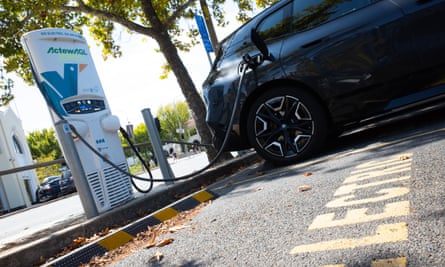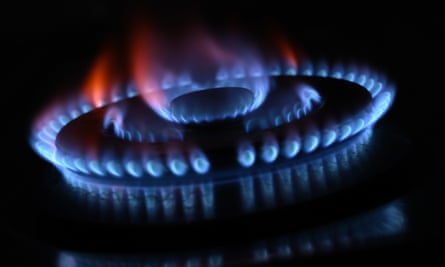Extract from The Guardian

‘At the point of natural replacement there should be no argument. Swap the fossil fuel machine for the cleaner, efficient, superior electric version that will also very likely save you money.’
Ridding your home of fossil fuels doesn’t have to be difficult or expensive. It just has to be part of your 10-year plan
- Change by degrees is our new Saturday column offering life hacks and sustainable living tips to help reduce your household’s carbon footprint
- Got a question or tip for reducing household emissions? Email us at changebydegrees@theguardian.com
So how do we electrify everything?
About 40% of Australia’s domestic carbon emissions come from the machines in our homes and the cars we drive. About 30% come from businesses and their operations. This includes electricity consumption. If we replace 100% of our fossil-fuelled machines with electric ones we have a chance to limit temperature rises to less than 2.0C. That gives us a fighting chance to save coral reefs, glaciers and help our children avoid catastrophic weather.
At a household level, this does not mean shelling out tens of thousands of dollars. Immediately swapping all your fossil-fuelled machines for electric ones would be expensive, inconvenient, and wasteful if you just bought a new car or water heater last year.
Those machines will routinely break or die over the course of up to 20 years. So at the point of natural replacement there should be no argument. Swap the fossil fuel machine for the cleaner, efficient, superior electric version that will also very likely save you money.

While upfront costs to electrify are now higher, they cost much less to run and maintain, and because we are early in the technology revolution, they will only improve. An analysis I did in 2021 with Rewiring Australia showed that by 2030 Australian families could be saving $5,000 a year by replacing fossil fuel-powered cars, heating, hot water and stoves with superior electric versions, and powering a big part of their energy needs from rooftop solar. Since this document was written, the price of fossil fuels such as gas, oil and electricity have all increased, but the trends remain similar.
This is what the average Australian household’s energy use looks like (although of course everyone’s usage habits are different).
Conventional fuels such as natural gas for heating and petrol for cars are very inefficient compared with electric alternatives. This means we can dramatically cut our energy use without sacrificing anything, just by using more efficient electric devices.
Electric vehicles
The average car drives approximately 12,500 kilometres a year, and vehicles are responsible for 69% of the average household’s total energy use. Luckily, electric vehicles are approximately 3.5 times more efficient at converting energy into motion. Even charging an electric vehicle with the existing electricity grid will approximately halve fueling costs.
Space heating and cooling
Heating the air in our homes accounts for 37% of average household emissions, once cars are removed. In Victoria this is 58%, compared with 8% in Queensland.
Reverse-cycle air conditioners (heat pumps) are at least four times as efficient at heating homes than alternatives such as natural gas, electric resistance heating and wood fires. An electrified heat pump saves energy and money with no sacrifice in comfort.
On average, space cooling in Australia requires significantly less energy than space heating. This means Queensland and Northern Territory homes use significantly less energy on average. Our current methods of space cooling are relatively efficient, and are already practically all electric. We can leave them as they are and enjoy the cost benefits from cheaper solar.

Water heating
Approximately 45% of Australian water heaters are gas, 45% are electric resistive, and the remaining 10% are a combination of solar and heat pump. But even on the existing electricity grid, the cost of water heating is roughly halved when using an efficient heat pump, compared with natural gas. With solar panels and a home battery providing the energy, the costs fall to around three times less.
Cooking
In 2021, Australia’s cooking energy use was split roughly 50/50 between electricity use and gas use. Induction stoves heat food more quickly and precisely than gas, and don’t foul the air. Electrifying stovetops is not only great for our wallets and the climate, it also positively affects the health of our loved ones.
Incentives and hidden costs
Knowing what incentives are available can help in your bid to electrify everything. The commonwealth’s fringe benefit tax exemptions for novated leases on electric vehicles mean you can effectively finance an EV using pre-tax income. A host of state and local rebates also exist for everything from EV chargers to heat pumps and induction stoves. Tradespeople are usually aware of these rebates and can often apply on your behalf.
It’s important to also know your rights. When I tried to remove gas from my home in the Illawarra in NSW, I was told by my local gas company there would be a fee of more than $1,100. Many Australians have had similar experiences and only after pushing back have they learned that the gas can be capped (cut off, but the gas lines remain in place) for about $150.
In my case I am still pushing to have the lines removed entirely, as a matter of principle. Some states such as Victoria have led the way in limiting these fees and absorbing the cost, but we can and should go further.
Electrifying your life doesn’t have to be difficult or expensive. It just has to be part of your 10-year plan – at the end of which, you’ll have much better appliances and cars, more money in your pocket, and a cleaner conscience about doing what you can for future generations.
Saul Griffith PhD is the founder and chief scientist of Rewiring Australia and Rewiring America
This week’s reader tip
Our
tip for reducing plastic waste (and the associated emissions in
producing them) is that we don’t buy plastic bottles of shampoo or
conditioner any more. Instead we use it in soap form. With three girls
in the house, it definitely reduces our plastic waste. It’s so simple –
be great if more people made the switch.
Katie Daniels, Richmond
Change by Degrees is our new Saturday column offering life hacks and sustainable living tips to help reduce your household’s carbon footprint. Got a question or tip for reducing household emissions? Email us at changebydegrees@theguardian.com
No comments:
Post a Comment